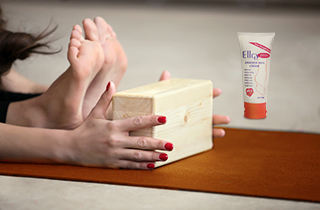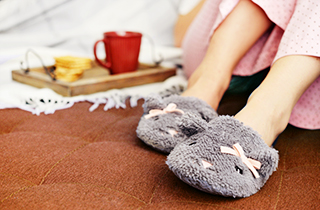
Women Aged 20 To 50 Years Old
Have Greater Chance Of
Developing Corns And Plantar Warts, Compared To Men
From squishing their toes into pointy shoes to crunching their foot bones into narrow heels, shoes are indeed women’s most empowering and yet, agonizing accessory. According to a survey conducted by Long Tall Sally, a global retailer of fashion and footwear in 2016, women around the world are cramming their feet into shoes that do not fit, with painful consequences. The statistics show:
- More than 80% of women in the US wear uncomfortable shoes during the day at least once each month, and 41% of women wear painful shoes at least four times a month.
- 44% percent of women worldwide go out at least two evenings each month in shoes that they know will hurt their feet.
- 40% of American women own shoes that they know they can’t walk in, but they wear them anyway.
Although most women are aware of the consequences of wearing ill-fitting or improper footwear, many may have chosen to endure the agonizing pain because of their love for shoes and lifestyle. They continue putting their feet at risks, without realizing the real cause and solutions.
Corns
Usually occur on the soles of the feet or the sides of the toes, corns are one of the most prevailing feet problem. Commonly faced by women due to improper or ill-fitting shoes, corns are areas of thick, hardened, accumulated dead skin cells that are caused by repeated rubbing, friction, or pressure. A 2006 study published in the Saint Martin’s University Biology Journal stated that men and women have different biomechanics and structures of feet. Women normally have narrower heels in relation to the fore foot. Their feet are narrower than men’s feet relative to their length. Women, generally, have smaller Achilles tendon and is pronating more than men. The habit of wearing tight or unseemly footwear on a regular basis is one of the leading factors that causes the development of corns.
Besides ill-fitting shoes, women also have the tendency of wearing shoes that are not suitable for long time wear. Jackie Sutera, D.P.M., a podiatric surgeon at City Podiatry in New York City explained that wearing shoes which had elevation or a heel, would shift a person’s weight to the ball of the foot. The higher the heel, the more weight and pressure were shifted forward. The pressure the toes experienced being pressed forward would lead to foot problems like corns, bunions and hammer toes. While it may perhaps be a challenge for women to resist the temptation of wearing a pair of fashionable heels, there is a guide on the maximum amount of time for different types of heels to be worn. Kitten heels, which may not seem as sexy as a stiletto, can be worn for about 4 hours before the pain kicks in. Medium-size dinner heels should not be worn more than three hours, and high stilettos should not be worn longer than one hour, especially in events that require a lot of walking.
Plantar Warts
Tend to develop in clusters with dry, crusty surface and small black dots, plantar warts or verrucas plantaris are another common feet problem. Their prevalence is estimated to be about 7 to 12 per 100 and children are more likely to have plantar warts. Often confused with corns, plantar warts are caused by the Human Papilloma Virus (HPV). The human papillomavirus cannot enter the body unless the skin is traumatized or damaged. Therefore, a skin injury is thought to precede the formation of plantar warts.
There are more than 100 types of HPV, but only a few types are known to cause plantar warts. These viruses thrive in warm, moist environments like shower floors, locker rooms and public swimming areas. Walking barefoot with blisters or small cuts on the feet at the pool or gym could be potentially exposed to the virus. Once the virus gains access to the body, it is known to invade and reside in the outer layer of the skin also known as the epidermis. A wart is a small growth on the skin that may look like a solid blister or a small cauliflower and it is often confused with corns because of the appearance and its growth area. Plantar wart can grow inward and get covered by a hard callus due to the pressure on the feet.
Effective Treatment
Corns and plantar warts are not serious feet problems and unfortunately, many people choose to treat the problems themselves. Self-treatment is generally not advisable because it can lead to injury and permanent damage. There are over-the-counter treatments that can provide relief. Products like Ellgy Corns & Warts Treatment Solution with 17% of salicylic acid can effectively loosen dry scaly skin to remove painful corns and warts. Salicylic acid is a keratolytic medication that dissolves skin protein, which makes up most of the mass of the corns and warts. It removes the thick layer of dead skin that often surmounts the affected areas. Ellgy Corns & Warts Treatment Solution sticks well on the feet. So, the solution will not smear to other areas. Besides that, it dries fast and it is easy to apply, at the right dosage. This makes treating corns and warts more convenient and affordable.
This is a Medicine Product Advertisement
MAL09061603X KKLIU 1917/2019





